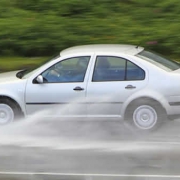Aquaplaning Explained
Table of Contents
Aquaplaning Explained

Aquaplaning Explained
Certainly! Here’s the article with added local interest:
When driving on roads with significant standing water- Aquaplaning Explained
Vehicles can become vulnerable to ‘aquaplaning’. Aquaplaning occurs when water cannot be displaced from between the tyre and the road surface, causing the vehicle to lose all contact with the road. This effectively leaves the vehicle out of control. The risk of aquaplaning increases as a tyre’s tread depth decreases, as there is insufficient tread to clear the water from the road surface properly.
Understanding Aquaplaning
Aquaplaning, also known as hydroplaning, happens when a layer of water builds up between your vehicle’s tyres and the road surface. This layer of water prevents the tyres from gripping the road, leading to a loss of traction. Without proper contact with the road, the vehicle cannot accelerate, steer, or brake effectively, significantly increasing the risk of accidents.
Causes of Aquaplaning- Aquaplaning Explained
Several factors contribute to the likelihood of aquaplaning:
- Tyre Tread Depth: As the tread depth decreases, the tyre’s ability to channel water away from the contact patch diminishes.
- Speed: Higher speeds increase the chances of aquaplaning as tyres struggle to disperse water quickly enough.
- Water Depth: The deeper the standing water on the road, the higher the risk of aquaplaning.
- Tyre Condition: Worn or improperly inflated tyres are more susceptible to aquaplaning.
Dangers of Aquaplaning
When a vehicle aquaplanes, the driver loses the ability to control the vehicle. Here are some specific dangers:
- Loss of Steering: Without road contact, steering inputs become ineffective.
- Inability to Accelerate: The vehicle may decelerate or maintain speed without the ability to accelerate.
- Unpredictable Braking: Attempting to brake during aquaplaning can cause the tyres to regain traction suddenly and unevenly, leading to a potential spin or skid.
Preventing Aquaplaning- Aquaplaning Explained
To reduce the risk of aquaplaning, follow these safety tips:
- Check Tyre Tread Depth Regularly: Ensure your tyres have sufficient tread depth. Experts recommend a minimum tread depth of 3mm for optimal safety in wet conditions.
- Maintain Proper Tyre Pressure: Keep your tyres inflated to the manufacturer’s recommended levels.
- Drive at Safe Speeds: Reduce your speed in wet conditions to allow your tyres more time to disperse water.
- Avoid Standing Water: Where possible, steer clear of large puddles or areas of standing water on the road.
What to Do If You Aquaplane
If you find yourself aquaplaning, stay calm and follow these steps:
- Ease Off the Accelerator: Gradually reduce your speed without making sudden movements.
- Steer Straight: Keep the steering wheel straight and avoid making sudden turns.
- Do Not Brake: Refrain from braking until your tyres regain contact with the road.
Local Interest: Halifax’s Wet Weather Challenges
For drivers in Halifax and the surrounding areas, frequent rain and wet road conditions are common. The hilly terrain and occasional heavy downpours increase the likelihood of standing water on the roads. Roads like the A629 and the scenic routes through the Yorkshire Dales can quickly become treacherous during heavy rain. Regularly checking your tyre tread and driving cautiously in wet conditions can help mitigate the risks of aquaplaning.
Local landmarks such as Shibden Hall and the picturesque Hebden Bridge attract many visitors, and ensuring your tyres are in top condition can make those journeys safer. The Calderdale area is known for its steep valleys and winding roads, which can collect water and increase the chances of aquaplaning, especially after heavy rain. Being proactive about tyre maintenance and understanding the dangers of aquaplaning can help you navigate these beautiful yet challenging roads safely.
In conclusion, aquaplaning is a serious hazard that can be mitigated by maintaining proper tyre condition and adjusting driving behaviour in wet conditions. Regular tyre checks and mindful driving can keep you safer on the roads, reducing the chances of losing control of your vehicle. Stay vigilant, and ensure your tyres are always in good condition to handle the unpredictable British weather. Safe driving around Halifax and beyond!
- Peugeot Exhaust MOT Fail
- Continental Van Eco Tyres
- Airless Tweel Wheel Tyre
- Alloy Wheels on Vans
- Nissan Qashqai Battery Problem

